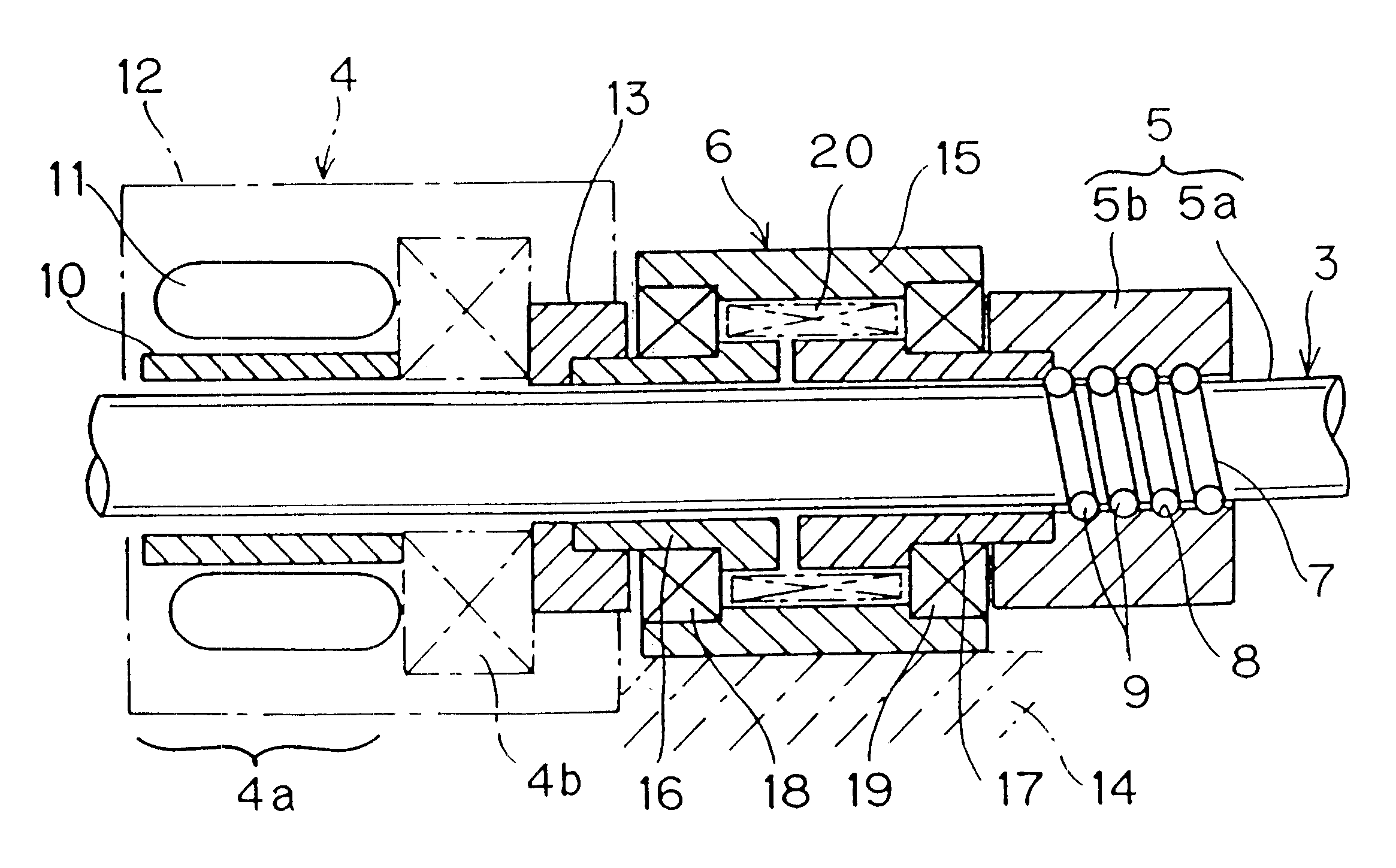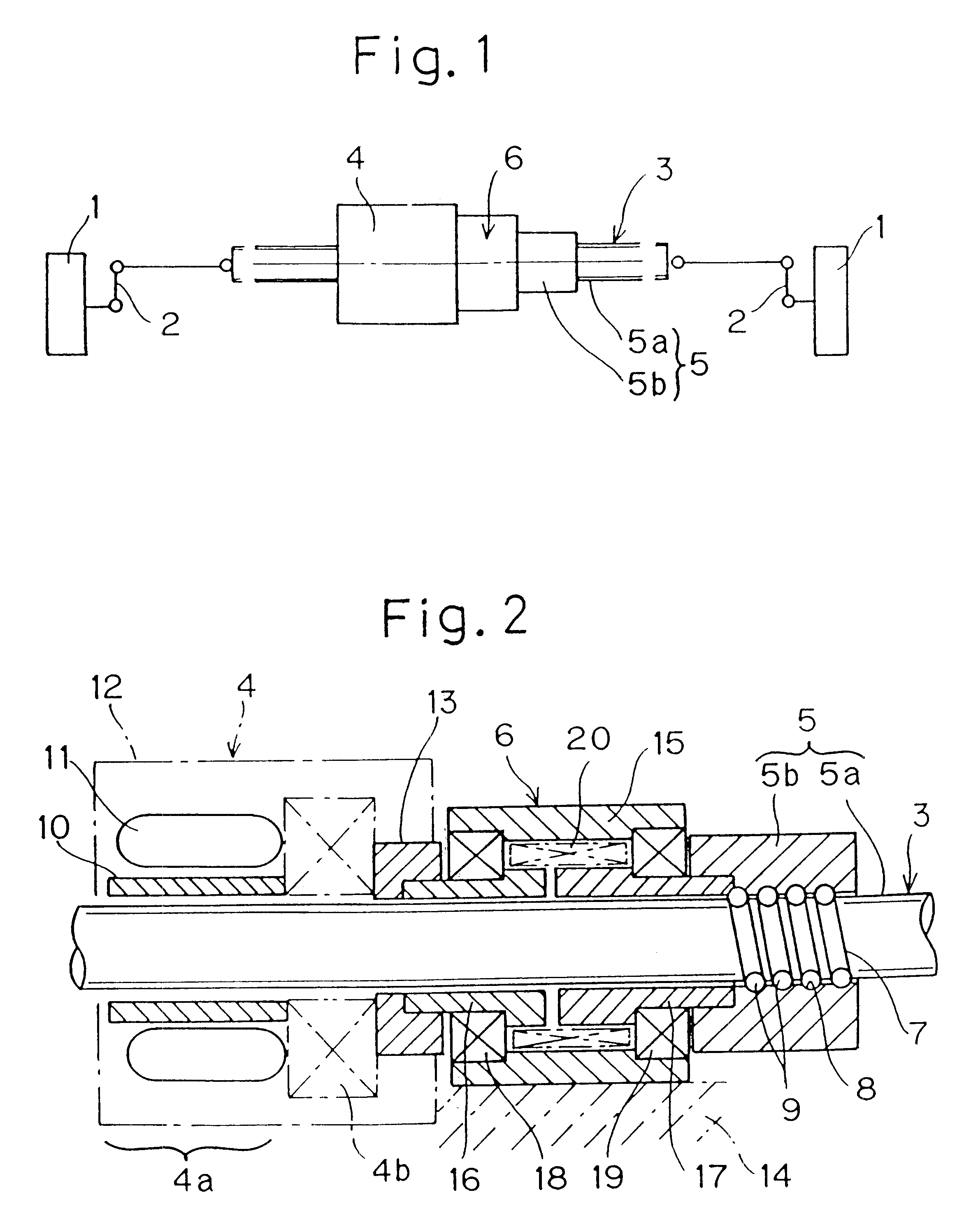Wheel steering apparatus
a technology of steering apparatus and wheel, which is applied in the direction of couplings, interlocking clutches, gearing, etc., can solve the problems of considerable loss and adverse effects on the steering ability of the vehicl
- Summary
- Abstract
- Description
- Claims
- Application Information
AI Technical Summary
Benefits of technology
Problems solved by technology
Method used
Image
Examples
second embodiment
The second embodiment shown in and described with reference to FIGS. 7 to 9 may be regarded as more specific than the previously described first embodiment and, except for those described with reference to FIGS. 7 to 9, the details thereof are substantially identical with those in the previously described first embodiment.
A third preferred embodiment of the present invention is shown in FIGS. 10 to 13. The wheel steering apparatus according to this embodiment is substantially similar to that according to the first embodiment shown in and described with reference to FIGS. 1 to 6, except for the following structural features. It is, however, to be noted that even in this embodiment shown in FIGS. 10 to 13, the clutch assembly 6, now identified by 6C, is a two-way clutch assembly of a reverse input limiting type that is, as regards the rotations in opposite directions are concerned, operable to transmit rotation from an input side ring 16C to an output side ring 17C, but to interrupt t...
PUM
 Login to View More
Login to View More Abstract
Description
Claims
Application Information
 Login to View More
Login to View More - R&D
- Intellectual Property
- Life Sciences
- Materials
- Tech Scout
- Unparalleled Data Quality
- Higher Quality Content
- 60% Fewer Hallucinations
Browse by: Latest US Patents, China's latest patents, Technical Efficacy Thesaurus, Application Domain, Technology Topic, Popular Technical Reports.
© 2025 PatSnap. All rights reserved.Legal|Privacy policy|Modern Slavery Act Transparency Statement|Sitemap|About US| Contact US: help@patsnap.com



